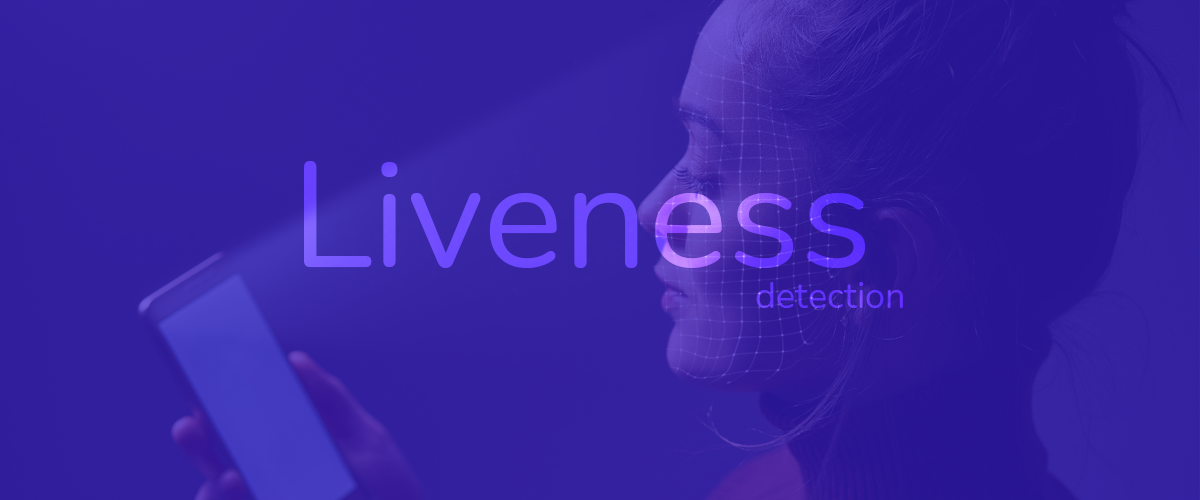Identity rights are fundamental principles in human rights that recognise the right of each individual to be identified as a unique and independent person with their history, origin, and characteristics. This right encloses different aspects, including the right to a name, nationality, and parentage, among others.
The right to an identity is included in several international human rights legislative instruments, such as the Universal Declaration of Human Rights. But is it guaranteed in all countries?
The reality is that many countries have specific laws and policies to protect and guarantee this right. Nevertheless, significant challenges remain in some regions, especially for vulnerable groups such as indigenous people, Afro-descendant communities, migrants and children in vulnerable situations.
As far as Latin America is concerned, this right becomes essential for the full exercise of human rights, and this is not possible without the existence of modern legal frameworks that are able to ensure this right effectively. As we all know, the digital transformation of countries has become a key factor in improving efficiency, transparency and accessibility to public services, including those related to identity and identification.
The adoption of digital technologies in civil registration and identification systems can offer numerous advantages, such as reducing bureaucracy, preventing fraud and improving security. Furthermore, innovation in the public and private industries can help speed up these processes and find creative solutions to existing problems.
A clear example of how the future is blurring is the 21th Meeting of the Latin American and Caribbean Council for Civil Registration, Identity and Vital Statistics (CLARCIEV). The conference brought together experts from 21 countries to explore and share knowledge on identification in an increasingly digitalised world.

Establishing a commitment by 2030 to give every citizen in the region an identity is an ambitious goal but achievable through a coordinated and user-centred approach. It requires collaboration between governments, international organisations, the private sector and civil society to develop and implement innovative and sustainable solutions.
This commitment connects with digital identity trends and identity verification in Latin America.
Voice to become an inclusive biometric technology
Voice is an intrinsic part of people’s cultural identity. Each individual has their own accent and intonation, reflecting their ethnic, regional and cultural background. It is a natural form of communication for many people, including those with visual or motor impairments. Voice recognition systems can enable these people to interact with devices and services in a more accessible way and without the need for additional devices.
For older adults, the use of voice as biometric technology has a large number of benefits. Voice tends to remain relatively stable over time, making it a viable and durable option for biometric authentication in this demographic. Furthermore, voice biometrics can improve the independence and quality of life of older people by allowing them to interact with devices and services more intuitively. For instance, they can receive preferential customer service from utilities such as electricity, gas or telecom companies.
It is important to note that voice as a biometric technology is not only limited to the call centre environment. While it is true that voice authentication systems have been widely used in this context, their potential goes much further.
Unlike other forms of biometric authentication that require specialised hardware, voice biometrics can be achieved by simply using microphones embedded in mobile devices.
Synthetic identity fraud will increase
Deepfakes will continue to be of concern but will share space with synthetic identities. This type of fraud, which is on the rise, involves the creation of false identities by combining real and fictitious information, which can lead to a number of negative consequences.
To effectively combat these attacks, it is essential to have anti-fraud mechanisms in place that can identify and mitigate the use of synthetic identities. It requires advanced algorithms trained and evaluated by recognised organisations such as the National Institute of Standards and Technology (NIST). These algorithms must be able to detect anomalies in data and patterns of behaviour that may indicate the presence of fraudulent synthetic identities.

Furthermore, technology is constantly evolving in all areas, for good and for evil, so it is necessary to have a dedicated and skilled R&D team to keep up-to-date on the state of the art in detecting and preventing synthetic identity fraud. Only through a proactive approach can we stay ahead of the curve.
Artificial intelligence will be the backbone of security
AI is establishing itself as a key part of cybersecurity, and its fast development is transforming digital threat defence capabilities in ways previously only seen in science fiction movies. AI’s scalability and accessibility make it particularly valuable in this field.
AI developers are focused on using this technology to strengthen existing cyber security measures, providing a more robust defence against growing cyber threats. One key area where AI is proving its worth is in identity verification.
In a constantly evolving threat environment, the ability to adapt quickly is essential. AI offers unique opportunities by analysing key device attributes, detecting tampering through counter-IA, identifying risks based on missing data, and finding patterns across multiple sessions and clients.
Deep learning algorithms, a subcategory of artificial intelligence, help solve increasingly complex problems in cybersecurity. When applied to liveness detection, these algorithms can analyse biometric features in real-time, such as facial movements, to determine whether a person is genuine or an attack.
In terms of fake identity verification in Latin America, these algorithms are able to examine and compare a wide range of data to detect anomalies that may indicate a fake identity. They can analyse subtle details in identity documents, such as passports, to identify manipulations or inconsistencies that might go unnoticed by the human eye.
Digital identity will enable equitable access to services in the countryside
Limited connectivity in villages far away from big cities has long been a barrier to accessing essential services such as healthcare, education and financial services.
Nevertheless, thanks to the digital transformation that many businesses are joining, rural residents can now access a range of digital services from their homes. It is especially important in areas where transport infrastructure is poor and travel to urban areas can be costly and difficult.
It is crucial to recognise that, in addition to the availability of digital services, digital education also plays a vital role in the correct use of technology. Training people in the countryside on how to properly use digital platforms and technology tools can maximise the benefits offered by these services. It includes not only access to information but also understanding how to interact safely and effectively in the digital world.
Using digital identity verification implemented on company platforms in Latin America, villagers can access telemedicine services to receive remote medical care or study through online education platforms. The ability to securely verify identity through digital means can remove significant barriers to accessing these services.

Financial inclusion is another important aspect that digital identity can improve in rural areas. With digital identification, people who previously did not have access to traditional financial services can open bank accounts, access loans and participate in digital payment systems. It can encourage savings, investment and economic growth in rural communities.
User empowerment
The user will become the focus of identity verification through facial biometrics. The “I am me” will become a tangible reality. With facial biometrics, each individual will be able to confirm their identity quickly, securely and effortlessly, simply with their unique face. This verification technique empowers the user by eliminating the reliance on passwords and reinforces the sense of authenticity in the digital world.
Facial biometrics integrates seamlessly into the natural flow of customer interactions and represents a positive touch point within the customer journey by providing an intuitive and frictionless user experience. This touchpoint is crucial in the identity verification process, as it is the first direct interaction users have with the technology.
Simply looking into the camera to confirm one’s identity significantly simplifies and speeds up online access, increasing customer satisfaction and loyalty and strengthening the relationship of trust between companies and their customers.
Stricter regulation
Latin America is currently facing a tightening of digital identity verification regulations. Governments in the region are tightening regulations to increase security, prevent fraud and ensure the protection of personal data in an ever-evolving digital environment.
Mexico and Brazil are just a few of the countries that have implemented laws requiring companies to adopt advanced user verification methods.
Furthermore, privacy concerns continue to grow, leading to the enactment and updating of data protection laws in several countries. An example of this is the enactment of a new Data Protection Law in Chile in December 2024. This regulatory framework brings with it significant changes, such as the creation of a Data Protection Agency, whose function will be to monitor and ensure compliance with the regulations. It also incorporates the data protection officer (DPO), who is in charge of guiding and supervising the processing of information within organisations. This law, which will come into force in 2026, also seeks to align the country with international standards such as GDPR.
The physical will evolve into the digital
One of the most significant changes is the transition from the physical to the digital, where more and more aspects of the daily lives of Latin American residents are moving to the virtual realm.
Companies are adopting process automation and digitisation strategies to adapt to market demands and offer a more efficient experience for their customers. One of the ways in which this is materialising is through the creation of digital platforms that allow companies to provide their products and services digitally.
These digital platforms enable access to products and services, offering a number of additional positive points, such as the opportunity to shop from anywhere and at any time, a superb variety of options and a personalised shopping experience.
Companies are also implementing secure identity verification systems to ensure that people are who they claim to be in e-commerce. These systems include document verification and two-factor authentication, among others.
Cryptobiometric adoption
Cryptobiometrics is a technology that combines cryptographic processing with biometric data to enhance security in identity verification processes. It employs advanced techniques such as homomorphic encryption, which allows for the processing of data while it remains encrypted. It ensures that personal information is protected throughout the verification process.
With this methodology, it is possible to verify a person’s identity without needing to decrypt their biometric data, thereby keeping sensitive information inaccessible.
Identity verification in Latin America in health, remote voting and online gaming
Identity verification in sectors such as health, electoral processes and gambling is not part of a futuristic vision but a present reality that is transforming the way these critical areas operate.
In health, the implementation of electronic medical records and centralised identity verification systems is significantly improving health care. These systems allow secure and efficient access to patient’s medical information, enhancing coordination between healthcare professionals and ensuring the accuracy and confidentiality of medical records. Furthermore, identity verification in the healthcare industry helps prevent fraud and unauthorised access to medical information, thus protecting patients’ privacy and security.
As for remote voting, this method of electoral participation has gained ground worldwide, especially after the Covid-19 global pandemic. It has become a cornerstone of e-democracy, increasing citizen participation by offering an inclusive way to exercise the right to vote.
A prominent example of this is the 2024 elections in El Salvador, where thousands of Salvadorans living abroad were able to exercise their right to vote from other parts of the world thanks to an identity verification process. This process included the capture of the Documento Único de Identidad (DUI) and facial biometrics.

The successful implementation of this voting system increases the democratic participation of citizens in the electoral process and strengthens confidence in the integrity and transparency of the electoral system.
In terms of the gambling industry, both Peru and Brazil are undergoing significant changes, ranging from the launches of new titles to regulatory reforms.
As of October 2024, only gambling companies that have applied for and obtained authorisation from the federal government can operate in Brazil. Platforms that do not comply with this requirement will be considered illegal and will face sanctions. This measure is part of a broader regulatory reform that aims to regulate the gambling market and combat gambling addiction and money laundering while protecting consumers’ rights.
A similar regulation is expected to be in the pipeline in Peru, marking an important step towards regulating this sector in the region. This new regulation aims to ensure a safe environment for players by establishing stricter controls on gambling platforms and their operation.
Increasing focus on sustainable and paperless solutions
One of the main strategies to move towards a “go paperless” future is to drastically reduce the use of paper in the registration and authentication processes. It involves the digitisation of documents and the implementation of secure electronic platforms to manage information efficiently.
It also involves the adoption of biometric signature solutions with the aim of reducing the environmental impact and minimising the use of natural resources and waste generation.
Reach us if you would like to implement identity verification solutions in Latin America, incorporating the latest emerging trends and advanced technologies.

I am a curious mind with knowledge of laws, marketing, and business. A words alchemist, deeply in love with neuromarketing and copywriting, who helps Mobbeel to keep growing.

GUIDE
Fully know your customers and drive the growth of your business
The journey between an organisation and its clients begins with proper verification, ensuring the safety of both parties. This KYC guide is essential for understanding the importance of knowing your users and complying with legal requirements.




